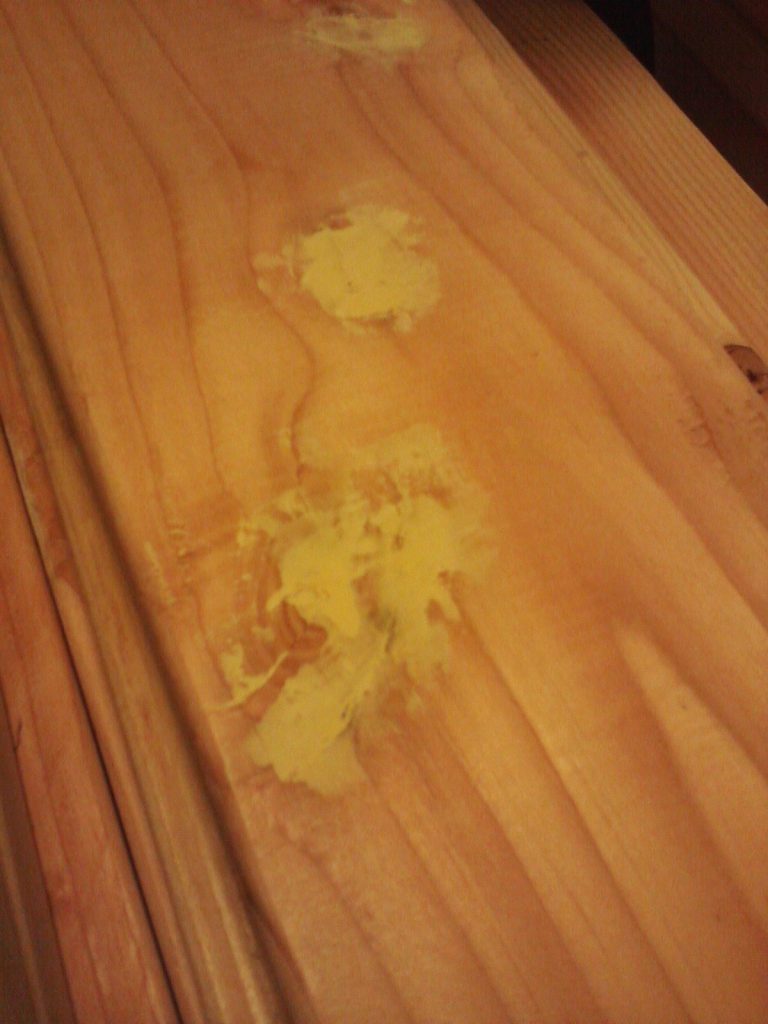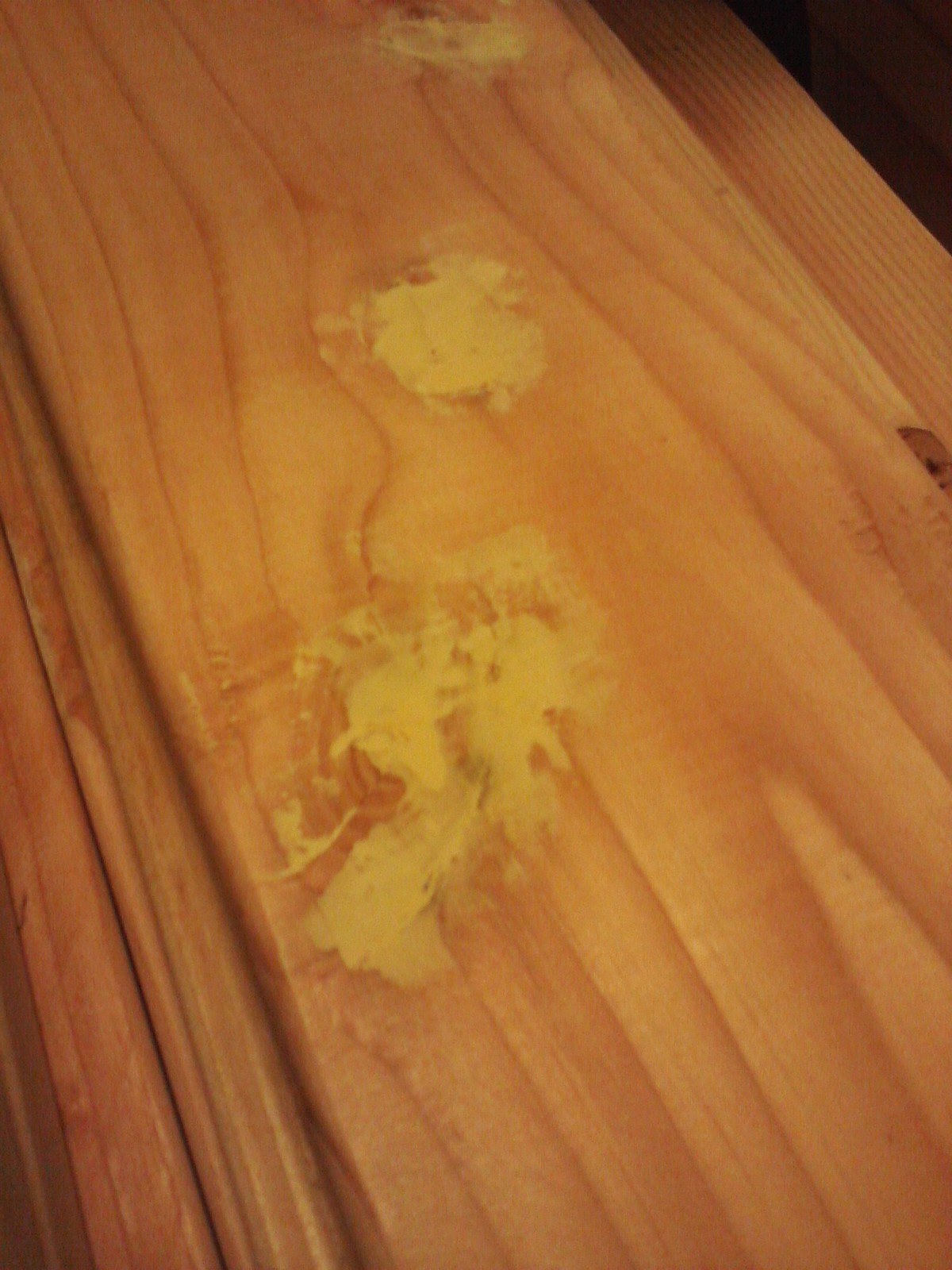Filling wood is one of those things that goes part and parcel with woodworking. Perfect joinery, with no cracks and nail holes to fill, is theoretically possible, as shown by the work of some of the finest woodworkers. But even they often have something that needs a bit of filling. Unless we throw away every piece we cut, which doesn’t come out ideally, making that nearly invisible joint, we’re stuck with joints and nail holes that need to be filled.
Having to fill those joints and nail holes isn’t the problem. What is the problem is trying to do so invisibly. The smaller the seam or hole that needs to be filled, the easier it is to make at least a somewhat invisible seam. Besides that, we depend on wood fillers to fix it for us, making that seam or hole invisible.
In response to this, manufacturers have developed “stainable wood filler.” The idea behind these is that they can be used on projects which will be stained. The staining process will stain the wood filler, as it stains the wood, making it invisible. However, many have brought the stainable part of that to question.
To be fair to the various brands of wood filler in question, the wood itself doesn’t accept stains evenly, with more porous parts of the grain accepting more stains and ending up darker, while the less porous parts end up lighter. Trying to make a wood filler that will match both parts of the grain at the same time, especially considering that it has to be able to contain elements to help it bond to the wood also, would therefore be impossible. Still, that’s the task they’ve set for themselves.
Testing Stainable Wood Fillers
Several people have tested the more popular stainable wood fillers on the market. The standard testing method is to drill random holes in pieces of wood, fill them, allow the filler to dry, sand them, and then stain them. For consistency’s sake and to offer the best side-by-side comparison, this is done with several wood fillers simultaneously, using pieces cut from the same boards. The holes are usually ½” in diameter and are shallow.
The results of the several tests I’ve seen were all pretty consistent. Light-colored stains (pine, golden oak) tend to create pronounced filled spots in the samples, while dark-colored stains (walnut) hide considerably better.
Of the various stainable wood fillers tested, Minwax consistently fares better and is the highest rated by the multiple testers. The hole filled with Minwax and then stained came the closest to matching the color of the surrounding wood. Once again, this is better with dark-colored stains than light-colored ones, regardless of whether Minwax stain is used or another brand is.
How the stain is applied makes a difference as well. With all the brands of stainable wood filler tested, a stain that has been wiped on is more likely to result in a closer match between the wood filler and the wood than a stain that is brushed on and then wiped off. That’s probably due to more stain soaking into the wood filler than into the wood in those cases where the stain was brushed on, essentially permitting as much stain to soak in as possible. The higher level of control offered by rubbing the stain on resulted in more even results.
Adding additional layers of stain, essentially staining over the stain, doesn’t do anything to hide the wood filler better and may cause it to become more evident if the wood filler absorbs more of the stain than the wood does.
Homemade Wood Filler
One of the standard solutions that woodworkers have developed, probably out of frustration in trying to find a genuinely stainable wood filler that will match their projects, is to use a mixture of wood glue and sawdust. For best results, they use sawdust made from the same wood they are making the project.
This works well for hiding the wood filler but does not work any better than the commercial wood fillers for staining. The best results come when the glue is inserted into the hole or seam and the sawdust pressed into it. Then, once it has dried and been sanded, the piece can be stained. As with the commercial wood fillers, this hides better with dark-colored stains than light-colored ones.
Finishing After Staining
Once the wood has been filled, sanded, and stained, it needs to be covered with a clear finish, generally polyurethane. After applying the first coat, sand the surface lightly with fine sandpaper to remove any unevenness caused by dust getting into the finish. Then, wipe the dust off before applying a second coat.
Although not commonly used on new projects, products that combine stain and polyurethane, such as Minwax Polyshades, do a better job hiding wood filler than stainable wood filler being stained alongside the wood it is used on.

Another Alternative
If hiding nail holes and seams is essential, then there is another product category to consider: tinted wood putty. These are available in various wood tones, manufactured by Minwax and Dap under their plastic Wood product line and Varathane. Each manufacturer produces a pallet of colors that are intended to match the most common wood grain coloration. This is the methodology used by the old painters when they needed to hide nail holes and seams. Having used it, I can attest that it works better than anything else I’ve found.
When using these putties, it is best to stain the wood and then apply a first coat of sanding sealer, varnish, or polyurethane to the surface of the wood before filling the hole and seams. These products can leave residue on the wood, a discoloration after the clear finish is applied, and are not always sanded. Sealing the wood gives better results.
The best way to apply these fillers is by hand, not with a putty knife. Generally speaking, they are most straightforward to work with if thickened up, making them a putty-like consistency. Painter’s whitening is the correct product for this, if it can be found. If not, one option is to file off some of the inner gypsum layers of drywall, filtering out the lumps. That’s the same material as the painter’s whitening. Another option is to use very fine sawdust, preferably of a color similar to the wood to be filled.
To add these solids to the filler, spread the painter’s putty or sawdust on a flat surface, then with the fingers, press the lump of putty into the dust, coating it. Knead the dust into the filler, working it through, adding more dust as needed.
The great thing about working with these products is that they can be mixed to create new colors. If working with walnuts, for example, it is not uncommon to have two different groups of colors: the dark and light grain for the heartwood and the dark and light grain for the sapwood. To get those colors, dark walnut putty could be mixed with some lighter colors, creating four different balls of putty, each of which matches one of the distinct colors in the grain of the piece.
To use the thickened putty, roll the edge of the putty ball between two fingers, pulling out an extended point. Press that point into the hole or seam, then break off the putty. Wipe the surface of the putty, smoothing it out with the surface. It may be necessary to return for a second application on larger holes or seams, but in most cases, one should be sufficient. The clear finish can be applied directly over the putty without waiting to dry.




